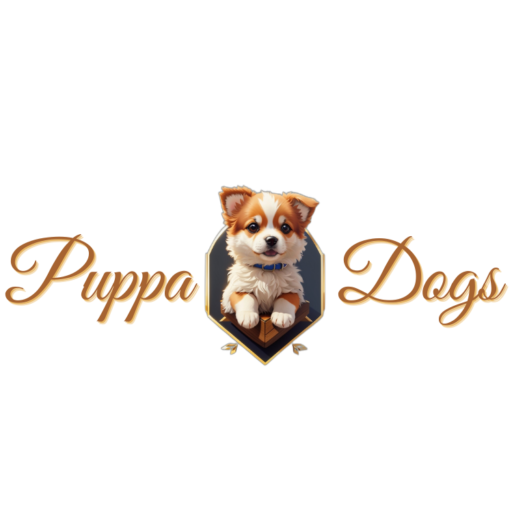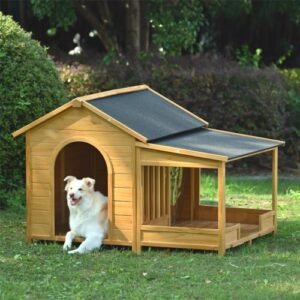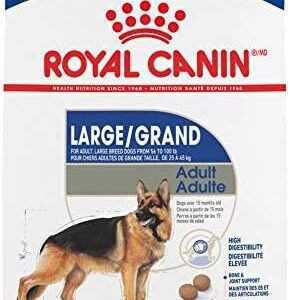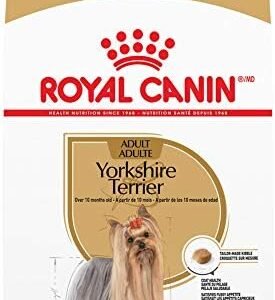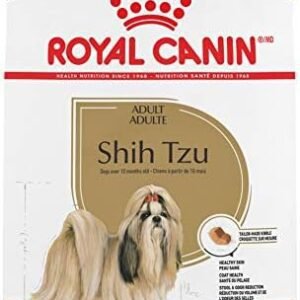Hot dogs are a favorite snack for many around the world. Imagine being at a summer barbecue, smelling hot dogs on the grill. Your dog might be curious about that smell too. But, is it safe for them to eat hot dogs?
As pet owners, we worry about our dogs’ diets. They are part of our families and deserve healthy food. We’ll look into the risks and benefits of dogs eating hot dogs. We’ll check the ingredients, the dangers of processed meat, and the risks of toppings.
Hot dogs are tempting, and we wonder if dogs can enjoy them too. So, can dogs safely eat hot dogs?
Table of Contents

Nutritional Facts of Hot Dogs
Hot dogs are a common treat at many gatherings. They are made from processed meat like beef, pork, or chicken. This meat is mixed with preservatives and flavor enhancers, then put in a casing.
| Food | Calories | Fat (g) | Sodium (mg) | Carbs (g) | Protein (g) |
|---|---|---|---|---|---|
| Hot Dog and Bun | 314 | 18.6 | 810 | 24.3 | 11.4 |
| Hot Dog Only | 189 | 16.8 | 409 | 1.3 | 5.6 |
| Bun Only | 126 | 1.8 | 401 | 23.0 | 5.8 |
Nutritional Benefits: Hot dogs have some good stuff for dogs. They have proteins for muscles and some vitamins and minerals like B vitamins and iron.
Drawbacks of Hot Dogs: But, hot dogs have downsides too. They have a lot of sodium, which can harm dogs. They also have preservatives like nitrites, which can be bad for dogs in big amounts.
Hot Dogs: A Complementary Treat, Not a Replacement
Hot dogs can be a treat for dogs, but they should not replace their main diet. Treats like hot dogs should be given carefully and in small amounts. A small piece of hot dog can be a reward during training or a rare treat.
But, hot dogs should not be a regular part of a dog’s diet. They have too much sodium and additives. As pet owners, we must prioritize our dogs’ health and happiness.
For a happy, healthy dog, a balanced diet is essential. If you give your dog a hot dog, do it sparingly. Always think about your dog’s health and happiness first.
How Much Hot Dogs Can a Dog Eat?

Feeding hot dogs to dogs needs careful thought. How much is safe? The answer is simple: a little bit is okay, but not too much.
Moderation is the Key
Treats, like hot dogs, should not make up most of your dog’s diet. Too many hot dogs can harm your dog’s health. They can cause too much sodium, leading to health problems.
It’s important to remember that treats should add to, not replace, a balanced diet. This diet should meet your dog’s nutritional needs.
Start Small and Observe
Start with a tiny piece of hot dog when introducing it to your dog. Watch how they react. Some dogs might be fine, while others might show signs of sensitivity.
If your dog seems okay with it, it’s tempting to give more. But, it’s important to stick to a small amount.
Preparation Matters
How you prepare hot dogs for your dog is important. Choose plain, unseasoned hot dogs. Avoid adding spices or toppings, especially chili powder, as they can upset your dog’s stomach.
Remember, dogs don’t need the same flavors as humans. Keep their diet simple and safe.
Consider Your Dog’s Size and Breed
The size and breed of your dog also matter. Larger dogs can handle more hot dogs than smaller ones. For example, a Great Dane can eat more than a Chihuahua.
Even within breeds, some dogs might be more sensitive to hot dogs. Always watch how your dog reacts to new foods.
Appropriate Serving Sizes
When deciding on serving sizes, consider your dog’s weight. Small dogs should get only a tiny piece of hot dog, like a fingertip. Medium-sized dogs can have a bit more, but still, keep it small.
Large dogs can have a small slice, but remember, a little is better.
Risks of Feeding Hot Dogs to Dogs: Understanding Allergies and Adverse Reactions
Feeding hot dogs to dogs can be risky, especially for allergies and adverse reactions. As pet owners, we must be aware of these risks. This is to protect our dogs’ health and happiness.
Food Allergies in Dogs
Just like humans, dogs can develop food allergies. Food allergies in dogs are rare but can happen. Hot dogs can cause allergic reactions in some dogs because of their proteins.
Short-Term Signs of Food Intolerance
Food intolerance is a milder form of allergy. It shows up quickly. If a dog eats something they can’t tolerate, like hot dogs, they might get sick. Symptoms include vomiting, diarrhea, and stomach pain.
Potential Hazards in Hot Dogs
Hot dogs can be harmful to dogs in other ways. The high sodium can make dogs thirsty and urinate more. This can hurt their kidneys. Preservatives in hot dogs can also cause problems, like digestive issues and allergies.
Signs and Symptoms of Adverse Reactions
It’s important to know the signs of bad reactions to hot dogs. These can range from mild to severe. Look out for:
- Digestive Distress: Vomiting, diarrhea, and bloating are signs of stomach trouble.
- Allergic Reactions: Itching, hives, and swelling are signs of an allergy. Severe reactions can be life-threatening.
- Lethargy: If your dog is unusually tired after eating hot dogs, it’s a bad sign.
- Difficulty Breathing: Trouble breathing or coughing can be a sign of a severe allergy.
- Changes in Behavior: Unusual behavior, like restlessness, can also be a sign of a bad reaction.
If you see any of these signs, get your dog to the vet right away. Your vet can help and give advice for your dog’s specific situation.
How to Feed Hot Dogs to Your Dog and Make It Enjoyable for Them
Now we know about the risks and benefits of hot dogs for dogs. You might wonder how to give your dog a hot dog safely and happily. There are fun ways to add hot dogs to your dog’s meals, making them a special treat.
1. Fresh or Frozen Treats:
Hot dogs can be a cool treat for dogs, especially when it’s hot. Just cut the hot dog into small pieces and freeze them. The cold, chewy texture is fun and soothing for dogs.
2. Food Topper or Mixer:
Hot dogs can also be mixed into your dog’s regular food. This adds flavor and can make picky eaters more interested in their meals.
3. Homemade Treats and Snacks:
Get creative in the kitchen and make homemade treats with hot dogs. Mix hot dog pieces with flour, egg, and water. Shape into small biscuits and bake until golden.
These treats are great for training or as a surprise snack.
4. Enhancing Meals:
Make your dog’s meals more exciting with hot dog flavor. Blend cooked hot dogs into a puree and add a small amount to their kibble. This can make even picky eaters enjoy their meals.
Just remember to keep portions small to avoid too much sodium.
5. Safety Tips:
Always choose plain, unseasoned hot dogs without additives. Avoid hot dogs with spices, onions, or garlic. These can harm your dog. Also, remove casings to prevent choking.
Homemade Hot Dog Recipes:
- Hot Dog Bites:
- Cut hot dogs into small pieces.
- Microwave or bake until crispy.
- Let cool and use as treats.
- Frozen Hot Dog Popsicles:
- Blend hot dogs with water or broth.
- Pour into ice cube trays and freeze.
- Enjoy on a hot day.
- Hot Dog Chew Toys:
- Freeze hot dog pieces in a dog-friendly toy.
- Your dog will love chewing on it.
Hot dogs can be a fun treat for your dog, but they shouldn’t replace a balanced diet. Moderation is key for your dog’s health. By being creative with hot dog treats, you can strengthen your bond with your pet. So, go ahead and give your dog these safe and fun hot dog treats!
Frequently Asked Questions about Dogs Eating Hot Dogs
As dog owners, we often wonder about the foods we share with our pets. Hot dogs, being a popular choice, raise many questions. Here are the top 10 FAQs about dogs eating hot dogs, along with answers to help you understand this topic better.
1. Can Dogs Safely Eat Cooked Hot Dogs?
Yes, dogs can safely eat cooked hot dogs in moderation. It’s important to note that raw hot dogs can be harmful due to bacteria. Cooking hot dogs thoroughly is key to avoiding health risks.
2. Are There Specific Hot Dog Ingredients to Avoid?
Absolutely. While plain, cooked hot dogs are safe, some ingredients are not. Avoid hot dogs with spices, garlic, onions, or too much salt. These can be toxic and cause health problems.
3. Can Dogs Eat Hot Dogs Every Day?
No, dogs should not eat hot dogs daily. They are high in sodium and preservatives, which can be harmful. It’s okay to give them as an occasional treat, but they should not replace a balanced diet.
4. Can Puppies Eat Hot Dogs?
5. Are Certain Dog Breeds More Sensitive to Hot Dogs?
Yes, some dogs are more likely to have food allergies. Bulldogs, Boxers, and Dalmatians have sensitive stomachs. Watch for any bad reactions and talk to a vet if you’re worried about giving them hot dogs.
6. Can Dogs Be Allergic to Hot Dogs?
Yes, dogs can be allergic to hot dogs. Signs include itching, rashes, or stomach problems. If your dog shows these signs after eating hot dogs, see your vet to find out what’s wrong and change their diet.
7. Is It Safe to Share Hot Dog Buns with Dogs?
Plain hot dog buns are okay for dogs in small amounts. But, they should be rare treats because they’re not very nutritious. Make sure the buns are fresh and not moldy, as mold can harm dogs.
8. Can Dogs Eat Vegetarian or Plant-Based Hot Dogs?
Vegetarian hot dogs might seem healthier, but they can still have soy, gluten, and artificial stuff. Some dogs might react to these. Always check the ingredients and talk to your vet before giving them any hot dog alternatives.
9. What Should I Do If My Dog Accidentally Eats a Hot Dog with Harmful Ingredients?
If your dog eats a hot dog with onions, garlic, or too much spice, call your vet right away. They might need to see a vet fast, depending on how much they ate and how big they are.
10. Can Hot Dogs Cause Long-term Health Issues in Dogs?
Eating hot dogs in small amounts is unlikely to cause big health problems right away. But, eating too many can lead to obesity, kidney issues, and heart disease over time. It’s best to stick to a balanced diet and get advice from your vet on what’s best for your dog.

Dr. Rachel Davis is a passionate veterinarian, having completed her studies in veterinary medicine at the University of California. Alongside her professional commitments, she remains dedicated to her beloved dog and has a profound love for all animals. In her spare time, she indulges in her passion for writing, often focusing on topics related to veterinary care and animal welfare.
















